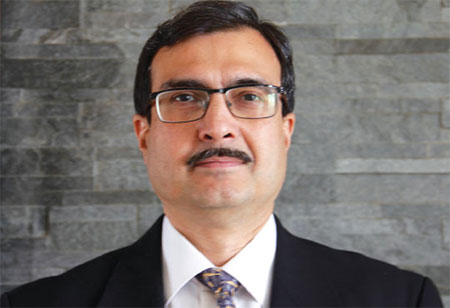The Hidden Role of State Governments in Increasing FTTH Penetration in India
By Sanjay Mehrotra, Chief Services Officer- Process &
Systems, Spectranet & Independent Consultant

Sanjay Mehrotra, Chief Services Officer- Process & Systems, Spectranet & Independent Consultant
Today almost all digital devices are connected to the internet. These devices need more & more bandwidth every year. In fact the bandwidth need is doubling every year. Whether it is the simple home user who uses IT to just store their pictures on the cloud or it is the small business who runs SaaS based applications on the cloud e.g. Google apps, ERP etc, everyone needs reliable bandwidth. Ten years back a 512 kbps internet connection was considered as broadband and good enough for a home user. Now even a 2 Mbps is considered insufficient. Fiber to the Home (FTTH) has brought in 50+ Mbps of internet connections to the home at affordable rates.
The IT enabled service industry needs reliable bandwidth pipes in every small office. Underground copper cables have outlived their life and fiber optics is the future. Large enterprises are moving work to homes of employees to save from unproductive travel times. Street congestions in urban India are reaching unbearable levels and the only way this can be reduced is by increasing Work-From-Home (WFH).
Estimation of Requirement of Number of Sites for Fiber Optics Based Connections
Assuming an urban area (central district) of 500 sq. kms housing a population of 1 crore (e.g. Bangalore) and assuming 30 percent of the households (of average 5 members per house) would need Fiber Optics based broadband we would require to light up 30 percent of 10,000,000/5*500 or ~1200 dwelling units per square km with Fiber Optics. This number would be many times more for areas having multistoried flats.
For a reliable service the maximum last mile overhead length of the Fiber optics cable should be less than 500 meters. This means at least 1 site per square km. In order to have a thriving competition we will need 2 to 3 wired internet service providers at the same place. This means on an average 2 to 3 telecom access node per sq. kms. This would easily increase to 20 to 30 numbers per sq. kms in dense high rise building areas.
For all these sites (or technically, telecom access nodes housing PON OLT equipment) we need fiber optic cables to be running up to the site from at least two paths to maintain redundancy of path. On the distribution side FO cables will need to run to a Fiber Distribution (FD) Hub where splitters are placed - again from two different paths. The FD Hub would typically be situated in the basement or parking of a large building. For less dense areas there could be a multistage cascaded fiber distribution architecture where 1:4 splitter is again split into a 1:16 or 1:32. The stage 1 and stage 2 splitters could be mounted on a pole. From the final splitter there would be 16 or 32 FO drop cables going towards 32 street-side dwelling units.
In the absence of any structured Fiber optic cabling policy in our cities any excavations done by the municipal corporations or utility companies invariably damage the underground FO cables.
The following are key problems in increasing our FTTH penetration:
• No cable laying ducts or dedicated tunnels exist under the streets as in developed countries.
• Congested city and road tarring is expensive so permission to dig in central city areas is restricted or not at all available.
• If ISPs hang cables on electric poles or tie them through trees
these cables are subject to damage from wind, rain and human or animal sabotage.
We are late in the game to lie a structured underground cabling in our congested urban areas. Hence the only option is to create a cable pole system.
Following must be the local policy of city governments:
1. Ask for bids from infrastructure companies to erect poles (or mount clamps on electric poles) exclusively to mount fiber optic cables. In return government provides security to these cables against theft and sabotage.
2. Fix rates that the infra company can demand (as a ceiling) from ISPs for mounting their FO cables.
3. Act as arbitrator in case of disputes between Pole infra company and ISPs.
4. Ask for maintenance guarantee for delayed repairs.
5. Migration to Underground cables to be synchronised with new road laying activity.
6. Till such time pole cable system should be the legal mode of laying telecom cables.
This is the only way our country can fast track high penetration of reliable FTTH. And this is the best way we to reduce travel times on our roads. For me this is an important move to build a robust future for our kids.




